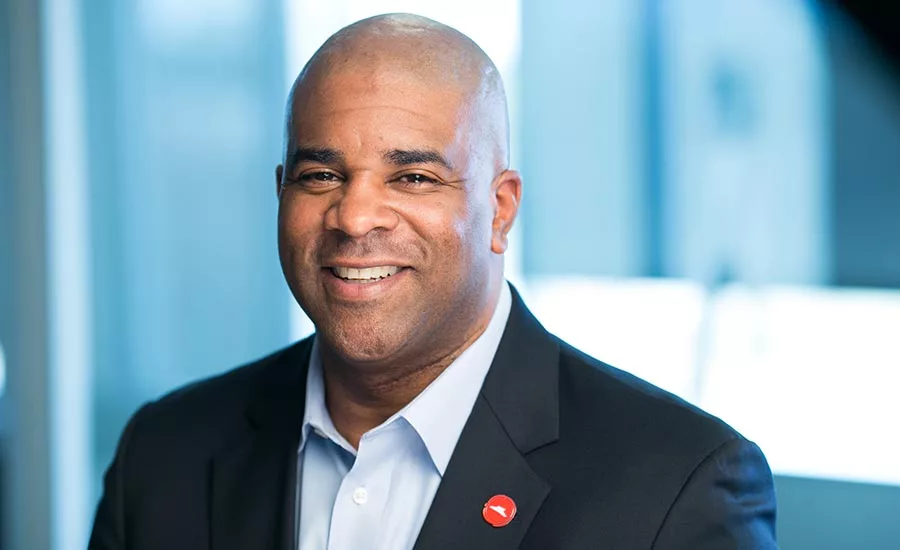Leadership and Your Security Career
Secure your mask before others: Preventing security burnout

FG Trade / E+ via Getty Images

Steven Antoine
I joined a teleconference call early the other morning. In our ritual morning greetings, I posed the question, “How are you holding up?” The expected and usual “fine” or “living the dream” responses, however, are not what followed. I listened as my teammates and colleagues unpacked the personal feelings they were enduring. And as more people joined the call, and ultimately the discussion, we realized the burden and stress everyone was carrying. No one was “fine.” We engaged in a real, meaningful and helpful conversation.
2020 was remarkably trying. It started with a pandemic that sent the entire world into quarantine. A ripple effect followed including unemployment, political chaos, homeschooling coupled with work-from-home orders, and — worse — significant numbers of deaths. We’ve also seen a human rights movement that has culminated from years of injustices, a presidential election that broke voter turnout records, and in some cases, financial reversal and natural disasters that have decimated entire communities.
At best, the past year has left most risk and resilience professionals more empowered professionally as their companies have seen the sky fall and are looking to us for solutions. At worst, current events have taken a mental toll on our teams, leaving some of us ill-equipped to handle a crisis. Left attempting to optimize our teams while struggling to cope with multiple crises simultaneously, it feels as if almost 75% of the workday is spent battling internal bureaucracy, while 25% is spent dedicated to the issues that require attention.
Ensuring you and your security team have the proper skills and resources to handle the unique and fluid nature of what’s happening internally and externally is tough. The longer the duration of the challenge, the more exhausting the exercise, and as we enter our second year with continued distribution challenges in regard to medical mitigation, relief is slow to come.
Think back to when you regularly traveled and listened to the pre-flight safety briefing. Remember the part about the air masks and the directive to secure your own mask before you can help others? It’s the same with our current litany of crises. If you and your team are currently burnt out from everything that’s swirling around you — and I know, it’s a lot — then you’re not going to be a resource for your company, nor your family. You can’t be.
Let’s take a look at two fictitious employees “Eric” and “Kate” for examples.
When Eric started in his security role, he was enthusiastic. He dispatched his duties with speed and optimism. As 2020 began, Eric started spending more hours on projects. He was constantly missing deadlines, requiring more frequent “mental days off” to “remove the fog,” and began complaining about everything. He put on 15 pounds in two months and often complained about pace and resources. Eric not only no longer wanted to get up in the morning, he no longer was engaged in his work.
When Kate started her security job, at first, it was wonderful. But soon, she started working 12- to 14-hour days. Her work and personal boundaries eroded. She lost 14 lbs. while pregnant! Her boss became extremely displeased because of so many missed deadlines, to the point that she just avoids her. Honestly, some days, Kate struggles to get up in the morning like Eric; she feels as if she’s “depressed.”
What is Burnout?
Burnout can be a result of the loss of meaning in one's work, coupled with mental, emotional or physical exhaustion as the result of long-term, unresolved stress. Like COVID-19, it can affect everyone.
General symptoms include:
- Lower resistance to illness
- Pessimistic outlook on work or life
- Physical, mental, and emotional exhaustion
- Time away from work
- Demotivation and detachment from your work
- Depleted energy levels
- Detachment in personal relationships
- Lower productivity
In the current circumstances, it seems difficult to avoid some sense of burnout based on symptoms. As risk and resilience professionals, we must think and apply the same risk mitigation strategies to ourselves and our personal challenges as we do to our employees and their challenges. Personally, and professionally, we can seek assistance. Stakeholders at work and family members at home often have vested interests in successful outcomes.
For a lot of us, professionally, the prioritization of our work has become paramount. Specifically, life safety items become a priority and focal point. Previously set goals and projects may have to be set aside to reduce the amount of stress flowing from the faucet
Just as we engage in work, in the search for root causes of challenge, we must apply that same process to personal tension; address low-hanging fruit by being mindful of stress levels, diet and physical activity in the form of exercise.
Seek assistance; teams and teamwork are more important as crisis management conversations and plans at work and home require more time and focus. While seemingly counterintuitive, we’ve all said, “an ounce of prevention, is worth a pound of cure.” Our job is to keep our organizations (and families) in the game. We can’t contribute if we are sidelined.
Most importantly, burnout is not an opponent to be conquered alone. If you find yourself feeling as if the burden is tangible, seek professional guidance. Stress is a silent killer and there are an abundance of resources available to help manage personal hardships.
Looking for a reprint of this article?
From high-res PDFs to custom plaques, order your copy today!








